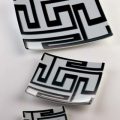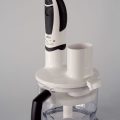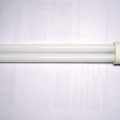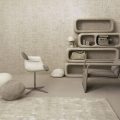Photo: Mark Seelen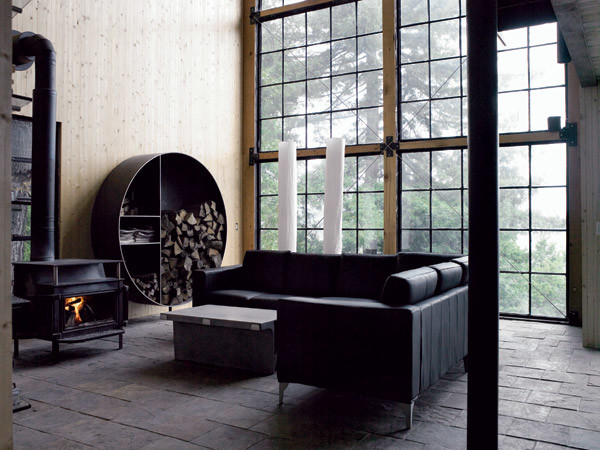 Luxury HomesSunday, 7am.Our film crew has been wandering around for about twenty minutes in the sticky fog that envelops the warehouses, giant transporters and cranes of the San Francisco harbor. The atmosphere here is as oppressive as in the film "Stalker". Finally, the goal is reached - we are at Pier 54, where Olle Lundberg's ferry Maritol is moored. In front of the gangway leading on board the old, rusty vessel, there are pots with plants and a mailbox. It is from here that we are supposed to go to the architect's country house. Olle and his wife Mary Brewer made the decision to live on the water six years ago - after long and unsuccessful attempts to buy an apartment on dry land. Real estate prices that year were shocking, and then Lundberg came up with an alternative plan: "I was looking for an old boat on the Internet and suddenly I thought: why don't we buy an entire ship and convert it into housing?!" As it turned out, it was easy to do: "When a ship is decommissioned, the owners are eager to get rid of it as quickly as possible. All international ports are filled with old ships.
Luxury HomesSunday, 7am.Our film crew has been wandering around for about twenty minutes in the sticky fog that envelops the warehouses, giant transporters and cranes of the San Francisco harbor. The atmosphere here is as oppressive as in the film "Stalker". Finally, the goal is reached - we are at Pier 54, where Olle Lundberg's ferry Maritol is moored. In front of the gangway leading on board the old, rusty vessel, there are pots with plants and a mailbox. It is from here that we are supposed to go to the architect's country house. Olle and his wife Mary Brewer made the decision to live on the water six years ago - after long and unsuccessful attempts to buy an apartment on dry land. Real estate prices that year were shocking, and then Lundberg came up with an alternative plan: "I was looking for an old boat on the Internet and suddenly I thought: why don't we buy an entire ship and convert it into housing?!" As it turned out, it was easy to do: "When a ship is decommissioned, the owners are eager to get rid of it as quickly as possible. All international ports are filled with old ships.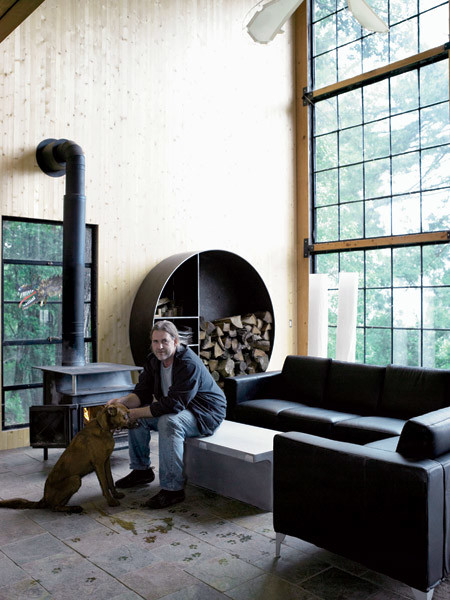
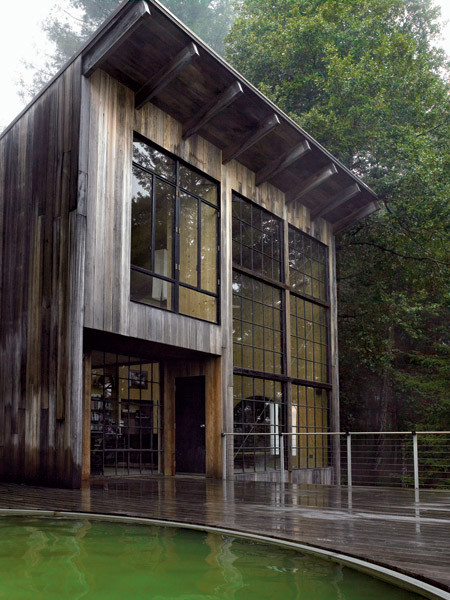
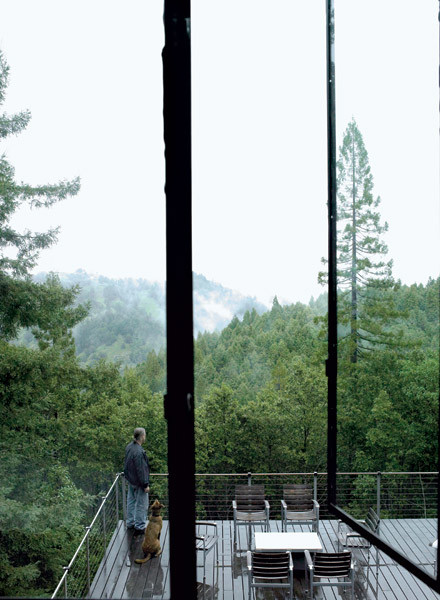
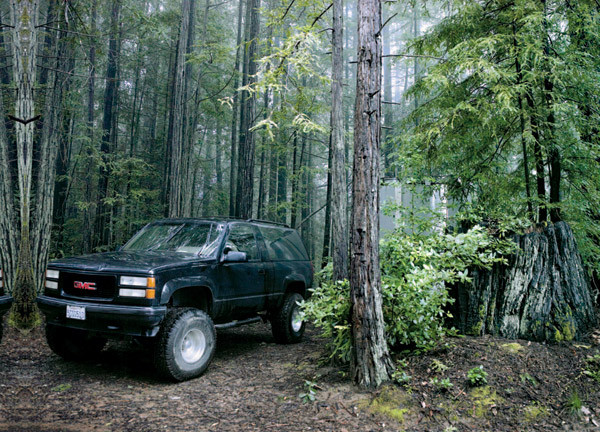
- Photo 1. Architect Olle Lundberg.
- Photo 2. The house is built on a foundation, preserved from the cottage, which previously stood on this site. Outside, it is sheathed with time-darkened old boards, bought on the secondary building materials market.
- Photo 3. The home of Olle Lundberg and his wife Mary is a two-hour drive from San Francisco. The terrace overlooks the forested coastal hills.
- Photo 4. The Lundbergs' house is surrounded on all sides by dense forest.
With transportation (Maritol was moored atcoast of Iceland) problems also did not arise. The team we hired started to work with great enthusiasm - these guys felt like real Vikings, going to conquer the New World. ” A journey of seven thousand miles was completed in seven weeks, after which the ferry, safely delivered to San Francisco, was completely reconstructed. Lundberg and Brewer spent more than 600 thousand dollars on it, but the end of the work instead of a holiday turned into a bitter disappointment: the city authorities flatly refused to register the ferry as housing. In the end, Olle and Mary managed to get out of the situation, finding a loophole in the law. The architect’s wife obtained permission to equip her recruitment firm’s office at Maritol, and since she’s been at work at night, nobody forbids them to live on the ferry around the clock, from Monday to Friday. But on weekends, when the offices are not working, they have to move to a country house, located two hours from San Francisco. This is where our film crew is going. Before you boot into a huge black jeep architect, we offer him a look into the nearest restaurant for a snack on the track. Olle decisively rejects this plan, promising on arrival at the place to treat us with his signature steaks. And right there he declares that his passion for cooking helped him a lot in building a house: “Every weekend I invited friends and employees of my bureau to the barbecue, and then offered them a little work to feed my appetite. Oddly enough, no one refused! ”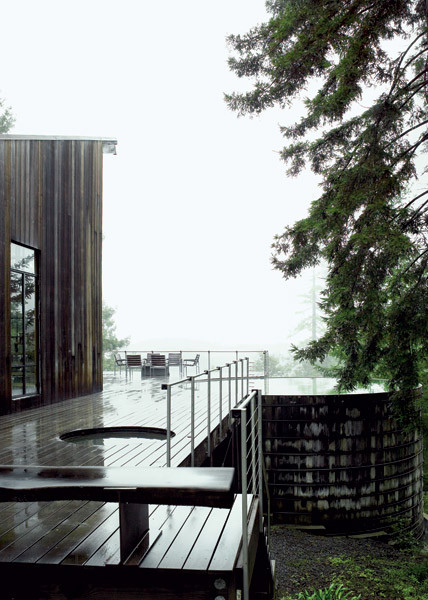


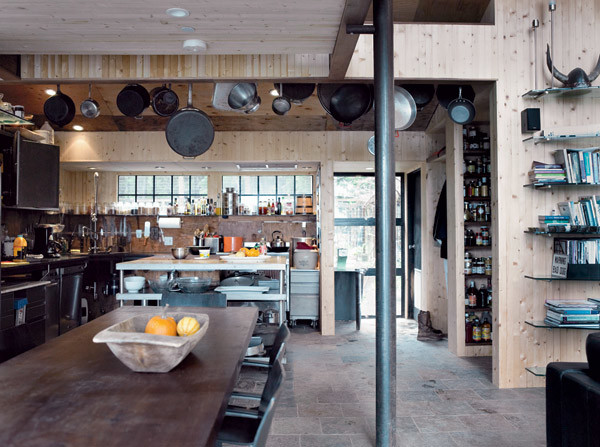
- Photo 1. In the background is a pool made from a huge barrel. Another pool is built in the image and likeness of this object - smaller in size and built into the wooden deck of the terrace.
- Photo 2. Next to the house is a small garden where you can pick a bunch of fresh greens for dinner.
- Photo 3. In the two-light living room mezzanines were built, where the master bedroom is located.
- Photo 4.The owner of the house designed most of the kitchen furniture himself. The storage systems are open; numerous bottles, jars, pots, bowls and ladles are on display, as is customary in traditional country houses.
While the architect indulges in memories, weWe pass the Golden Gate Bridge, drive through Marin County and enter Bodega Bay, the iconic place where Hitchcock filmed his “Birds.” From the road, you can see the roof of a school and a church — this is where actress Tippi Hedren was attacked by black crows. Meanwhile, Lundberg continues his story: “Mary and I decided from the very beginning that we would build our country house ourselves, and almost never used the services of workers. In general, I consider myself not so much an architect as a craftsman. It is important to me that the things I create are impeccable not only from an aesthetic point of view, but also from a practical one. Whatever Lundberg Design designs — be it an entire house or just a door handle — all the work is done by employees of our own workshop. This is the only way to get a truly high-quality result.”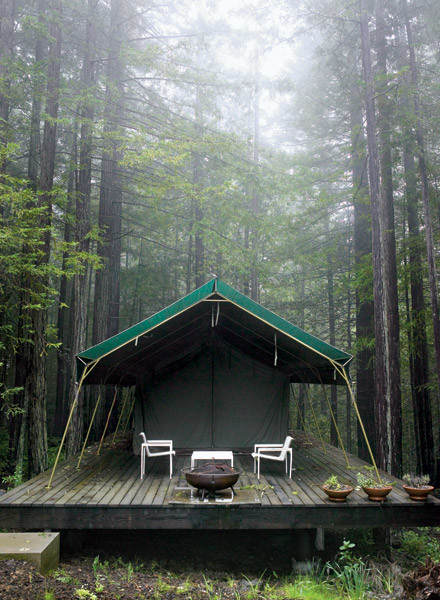 The desire to do the lion's share of the work,The project involved building the house with their own hands, which took five years of hard work. Olle and Mary devoted all their free time to it. “We would come to the construction site every weekend and sleep in a tent, which we would pitch right in the middle of the unfinished living room,” Lundberg recalls. At this very moment, we drive up to the cottage, which emerges from the thick fog like a ghost. The first thing that catches your eye is the dark, almost black, cladding of the facade. The architect’s home looks much older than its years; and this is clearly not only because the wood got wet in the rain. Olle made a point of using only recycled building materials in this project, thereby saving them from inevitable disposal. “I like to give old houses a new life,” says the architect, lighting a fire in the fireplace. “These boards are beautiful because they have retained the marks of time and bad weather.”
The desire to do the lion's share of the work,The project involved building the house with their own hands, which took five years of hard work. Olle and Mary devoted all their free time to it. “We would come to the construction site every weekend and sleep in a tent, which we would pitch right in the middle of the unfinished living room,” Lundberg recalls. At this very moment, we drive up to the cottage, which emerges from the thick fog like a ghost. The first thing that catches your eye is the dark, almost black, cladding of the facade. The architect’s home looks much older than its years; and this is clearly not only because the wood got wet in the rain. Olle made a point of using only recycled building materials in this project, thereby saving them from inevitable disposal. “I like to give old houses a new life,” says the architect, lighting a fire in the fireplace. “These boards are beautiful because they have retained the marks of time and bad weather.”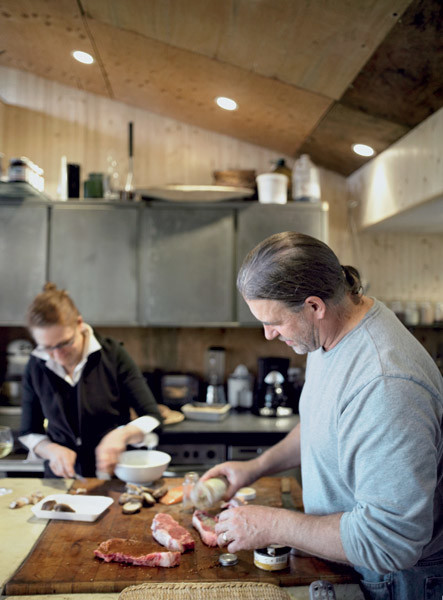
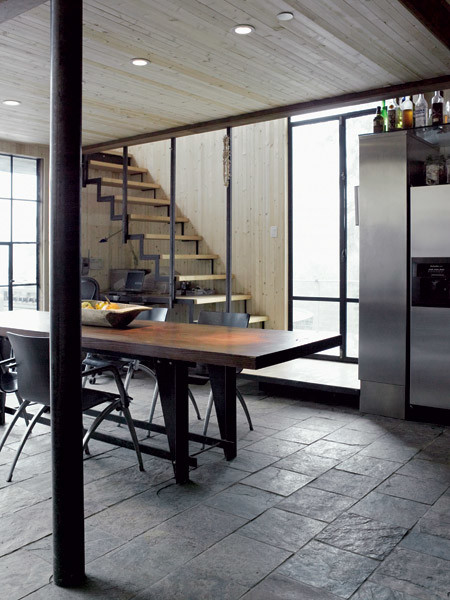
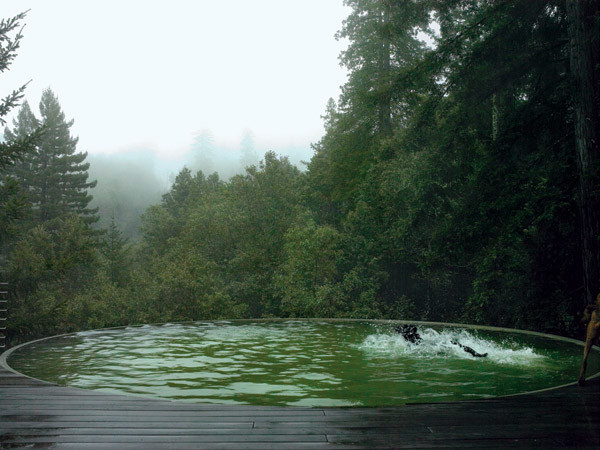
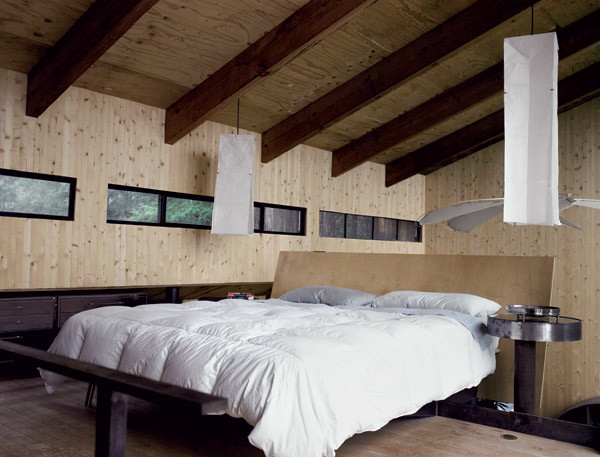
- Photo 1. Olle Lundberg preparing his famous steaks.
- Photo 2. Dining area. A table designed by Olle is surrounded by chairs from Artifort. In the background is a staircase leading to the bedroom on the mezzanine.
- Photo 3. The size of the pool is 7.5 m in diameter and 4 m in depth.
- Photo 4. The bed for the bedroom located on the mezzanine Olle designed himself.
Most of the furniture in this house is— also with a history. It was custom-made for other projects of the architect, but for various reasons it never found its application there. For example, the aluminum coffee table was intended for The Diva Hotel, and the cypress side table — for The Slanted Door restaurant (the owners rejected it, considering it too narrow). But the most interesting story is connected with the swimming pool built into the terrace. “One fine day, I discovered a huge cistern next to the still unfinished house. It turned out that my carpenters had rolled it here from a neighboring ranch, covered it with boards and used it as a perch during a smoke break.” To turn the tank into a pool, it had to be disassembled into parts and covered with a special water-repellent compound. Finally, the architect advises: “Look around: what you are looking for may be right under your feet!” Read more:




